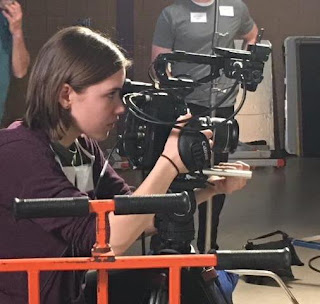Copyright or Copywrong?
The status of fair use among photographs published online is a highly controversial subject. It seems the U.S. has no concrete laws or guidelines in place for determining whether or not an image is fair use. Granted, there are the four factors in which judges take into consideration during cases of potential copyright infringement. These include the intention of the individual using the work, the nature of the work, how much or little of the work was used, and the effect on the value of the original work. Though, judges are not technically required to adhere to such guidelines. It seems like a high-risk gamble in using photographs that are not yours. People do not seem to understand the significance of taking an image and redistributing it in some public manner. I have been on both sides of the dispute.
I posted my own photographs on my website. I created the site in coordination with a school project. A few months afterwards, my friend sent me a link to a girl's photography blog. She went to my school and had stolen my images, some of which I submitted to contests, and she posed them as her own! I was furious, but since it was just a short-term project, I did not put any type of protection or copyright on the images.
On the other hand, I took multiple semesters of tv and film production courses at my school. When we were using images or audio clips to report world news, or make a parody video, YouTube blocked our broadcast nearly every time on the basis of copyright. We were not claiming the material as our own or profiting off of it in anyway. We used it for educational purposes, and as a result none of my friends or family members could view the work I was doing.
The articles we read about the Brammer v. Violent Hues Productions LLC case seem to clash in their perspective. One article seemed in favor of the production company who posted Brammer’s image. This article stated multiple quotes from the case on how Brammer did not display any clear copyright notice for the image, how the use of the image was factual and educational, and how the market value of the original image was not harmed. Another article stated quotes from copyright experts and lawyers who defended Brammer. Many claimed the case would encourage other companies and internet users to steal artists’ images online. In this particular case, I believe the image was fair use. The president of the production company even took the image down at Brammer’s request prior to the lawsuit.
While it is difficult to put official rules in place for copyright and fair use, because it varies depending on each situation and forum, I believe something must be done to set clear parameters. The internet is still fairly young, but it has developed enough to require such laws. In my Intercultural Communications course, we have been evaluating use of the media and internet in countries such a China. The government there has extreme dictatorship over what occurs online and what is posted or viewed. While I am grateful we have the right to free speech and expression in the United States, there must be some compromise so there are laws in place that protect my photographs online but also do not prevent the use of material in an educational or informational setting.

This is a good response and reflection to the articles. I think it is important to keep in mind that any content someone creates is immediately protected by copyright law in the US, and that intellectual property retains as much, if not more value, than physical property.
ReplyDelete